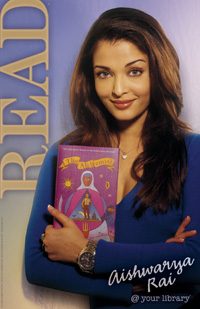I want to thank
Ray Davis for picking up on my
Toy/Story idea from a couple of months ago. Following his recent post on The Valve, I went and read Hans Christian Anderson's "The Steadfast Tin Soldier" (which was nasty but damn good, I thought). My own earlier reading of
Toy Story was driven by the story's Fairy Tale qualities, so here is another literary reading of a fairy tale, only a little less heavy on "theory" this time around.
* * *
Everyone knows the story of Rumpelstiltskin, yes? If you're hazy, here's a nano-summary of the standard, Brothers Grimm version:
1. Peasant girl; her dad promises the King she'll weave straw into gold, leaving her stuck. 2. Troll/Gnome/Manikin/demon feller sells her the secret but requires that she learn his secret name. 3. She does ("Rumpelstiltskin"), and wins.
(And
here is the Grimm version in translation, more or less intact; scroll down links to the German)
This story, to state the obvious, is about the power of a secret name, the knowledge of which gives you have essentially infinite power over your enemy. If we look a little deeper, though, we notice that it's not one but
two secrets, which are paired but asymmetrical: the peasant girl/princess learns the secret of making gold, while the gnome (I prefer "gnome" over "manikin") holds the secret of his name, until he stupidly gives it away. The secret she's interested in is linked to the value of
labor, whereas the secret the gnome keeps to himself is in
language. Lingua-philes and Derrida fans should find this story to be congenial: the power of language trumps the material and labor-oriented power of the spinning-wheel.
Also congenial: in fairy tales, the editors of the Norton
The Great Fairy Tale Tradition tell us, gnomes are usually assigned names that are never given to humans. That might seem small, but there's a lot in it, if you consider that 1) the names inevitably expose a gnome's gnomy-ness, and that 2) human beings can always learn, and utter, a gnome's name. The gnome is a terrifying Other -- defined by his often irrational (or non-selfish) malevolence. But he can always be beaten in language.
Back to Rumpelstiltskin. A little digging reveals much, much more behind the basic story. For one thing, there are dozens of versions of this tale outside of the German tradition. In England, Scotland, and Wales, the gnome was alternately known as
Trit-a-Trot, Terrytip, Whuppity Stoorie, and
Tom Tit-Tot. Of the batch, none of them have quite the same ring as Rumpelstiltskin, though "Whuppity Stoorie" is pretty memorable. "Rumpelstiltskin" works so well in English because it seems to conjoin three existing English words: "rumple," "stilts," and "kin," making it relatively easy to pronounce -- but still utterly anomalous. (And no, I can't make anything meaningful of the combination of these particular three; I tend to think "Rumpelstiltskin" is a purely phonetic pleasure, that happens to derive from the German "Rumpelstiltzchen.")
Most importantly for my purposes, there is a
very juicy French version of "Rumpelstiltskin". Here, his name is
Ricdin-Ricdon, and the same Norton
Great Fairly Tale Tradition volume mentioned above includes a long version of the story, by Marie-Jeanne Lhéritier. It was first published in 1696 (well before both the brothers Grimm and Hans Christian Anderson), in a volume of stories called
Ouvres meslées.
"Ricdin-Ricdon" unlocks many of the elements of the Brothers Grimm Rumpelstiltskin narrative that seem a bit pat. First, the power granted to the peasant girl Rosanie by Ricdin-Ricdon is attached to a magic wand that enables her to
spin raw flax and hemp into fine yarn without effort, and also, at a second wave, to
weave the yarn into fabulous and intricate tapestries. It's not gold, but fine fabric, that is her ticket to the Queen's (in this case) good graces. This tells you something about the role of fabric and weaving in Europe's history: it was potentially a powerful tool for social advancement, and central to social positioning in a way that might seem quite strange today. What you wore literally and immediately revealed your social caste.
There are also a number of other features in "Ricdin-Ricdon" that are quite different (and better) than "Rumpelstiltskin." Short of actually giving you the story to read, it's difficult to explain it, so let me try a list:
--
Labor. It's not just that Rosanie's poor. She's also clearly marked by Lhéritier as
lazy; she knows how to weave well, but doesn't want to work. She could in theory satisfy the Queen's demands for fabric, but she would have to weave night and day to do it.
Also, the good King and Queen who take Rosanie under their wing are known as prudent and productive rulers (I think this was published in during the time of Louis XIV, so perhaps there is a bit of court flattery going on). Lhéritier underscores monarchical goodness by naming them "King Prud'homme" and "Queen Laborieuse," respectively. They admire Rosanie partly for her beauty, but really because of her reputation as a weaver (which is, as we know, based on an illusion).
--
No confusing motherhood angle. When she's adopted by the Queen, she doesn't get to marry the Prince right away. In the Grimm version she has a child that Rumpelstiltskin threatens to steal, which doesn't quite fit the social advancement/wealth acquisition theme of the story. Here the Prince is in love with Rosanie, but the class barrier makes any thought of a marriage impossible, that is, until it's revealed at the end of the story that Rosanie is actually of royal birth from another kingdom. Then a marriage can be properly arranged by the two royal families. (It's only via an arranged marriage that the couple will really get to do the all-expenses paid, "happily ever after" honeymoon.)
--
Storytelling reflexivity. Rosanie's real parents are named "Lord Longuevue" and "Queen Riant-image," and her father-figure guardian (who had seemingly abandoned her earlier in her life without telling her the secret of her birth) is named "Disantpeu." They are -- I'm not making this up -- the Rulers of the "Realm of Fiction."
The parallels between storytelling and weaving are pretty obvious -- one weaves a yarn, etc. -- but in the case of "Ricdin-Ricdon" they are doubled and even tripled. Much of the structure of this story is actually narrated indirectly, as characters recount events to each other (much of Rosanie's own story is narrated in dialogue to Ricdin-Ricdon). After hearing of Rosanie's woes, Ricdin-Ricdon offers her his wand, and actually
tells her his name.
And literacy and writing plays a part in this. It's only after she's ensconced in the court of Queen Laborieuse that Rosanie starts to learn to read but, as with weaving, she finds to be a bit too hard to make it a habit. Still, she uses the tool when she's struggling to remember Ricdin-Ricdon's name:
Even though Rosanie still had difficulty in forming the letters of the alphabet, she wanted to see whether these letters could help her recall the name she passionately sought. She went through great pain and applied herself as best she could until she wrote down Racdon, then Ricordon, and finally Ringaudon. In some instances, she was on the verge of joy because she thought she was about to find the name. But then she would fall into despair, convinced that the names her memory recalled were nowhere near the right and proper name.
Writing is, historically, the essential tool for remembering language, though usually one uses something
previously written as an aid to memory. It send Rosanie down the right track, but she hasn't quite mastered it. (When she does, Lhéritier hints, she will be able to expose every Gnome who comes her way with the light of her
Logos.)
There's a whole essay on
Of Grammatology lurking here, but I'll save it (and I'm sure you'll thank me).
--
Ricdin-Ricdon's interiority. In this version, the gnome actually has a motive of a kind, which is revealed in the scene at the end where gives his name away. The song tells you part of the story:
If a young and tender female,
Loving only childish pleasures,
Had fixed it in her mind
That my name is Ricdin-Ricdon,
She would not fall into my trap.
But the beautiful lass will soon be mine,
For my name has slipped her mind.
The editors of the Norton volume suggest that "spinner" folktales like Rumpelstiltskin/Ricdin-Ricdon might have been told by groups of women weavers working together. This is one moment where that really seems to click: there is a distinctly feminist warning here -- to women who don't know how to earn your keep, or who aren't smart enough to look after yourselves, watch out!
He follows it up with a rant about, well, the Courtly Gaze:
"Since men are educated and more cultivated than women, we ordinarily have more trouble in seducing them than we have in duping the gullible sex unless we make use of this sex to get men to fall into our traps. On the other hand, men often cause women to fall into our snares. I myself have acquired more young girls by exploiting their desire to appear beautiful and to groom themselves than twenty of my comrades who have tried one hundred other means to capture them. And this powerful passion that makes them want to acquire beauty and elegance with such fury stems from their boundless desire to captivate men."
The grammar here is a little tricky. Keep in mind that the Prince is overhearing Ricdin-Ricdon talking to an evil sorceress (who I haven't mentioned... there is a whole 'mirror' plot where sorceress attempts to trick the Prince...).
The first part of the passage above seems to be straightforward enough: this is how you trick men, and that is how you trick women. But even as Ricdin-Ricon explains his method, in the final sentence of the passage quote above he hints that it's not just gnomes and sorceresses who play the game of ensnarement: it's inherent in the fabric of (non-supernatural) human desire and attraction. And I think that Ricdin-Ricdon is suggesting that it goes both ways.
* * *
So, yeah, go read "Ricdin-Ricdon," if you can get hold of a copy. (I didn't see any versions of the Lhéritier story on the internet, but I didn't try very hard. If anyone can track down a link, it would be appreciated.)
But more than that, I'm curious to see if people have ideas about other classic fairy tales that they want to revisit. Everyone has probably considered (and hopefully rejected) the deep sexism of something like Snow White (women as pure/virginal pedestalized 'statues' until released by the desire of men). But maybe there are other tricks in these old stories that might take us in fresh directions.
[Cross-posted to
The Valve]

